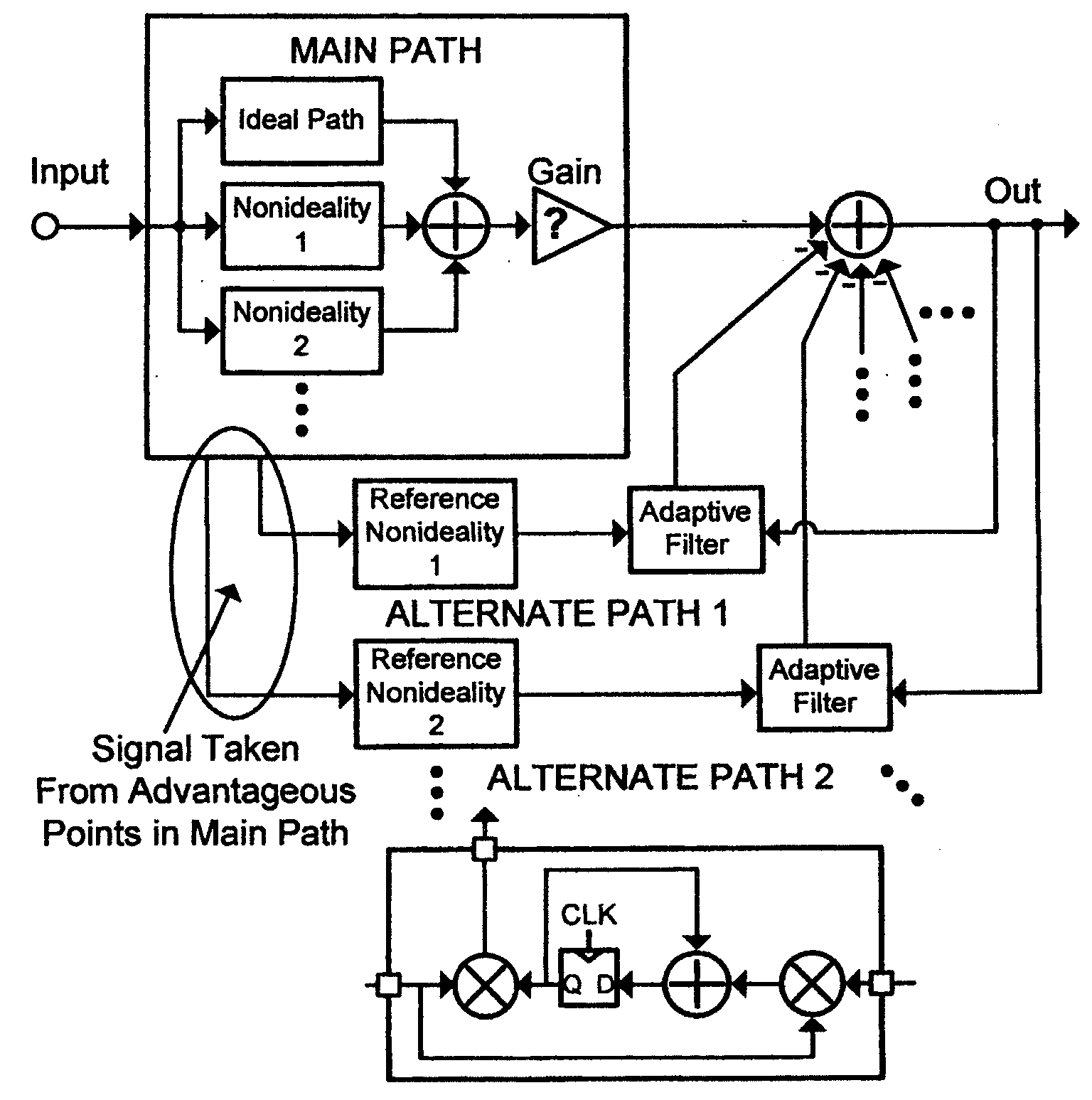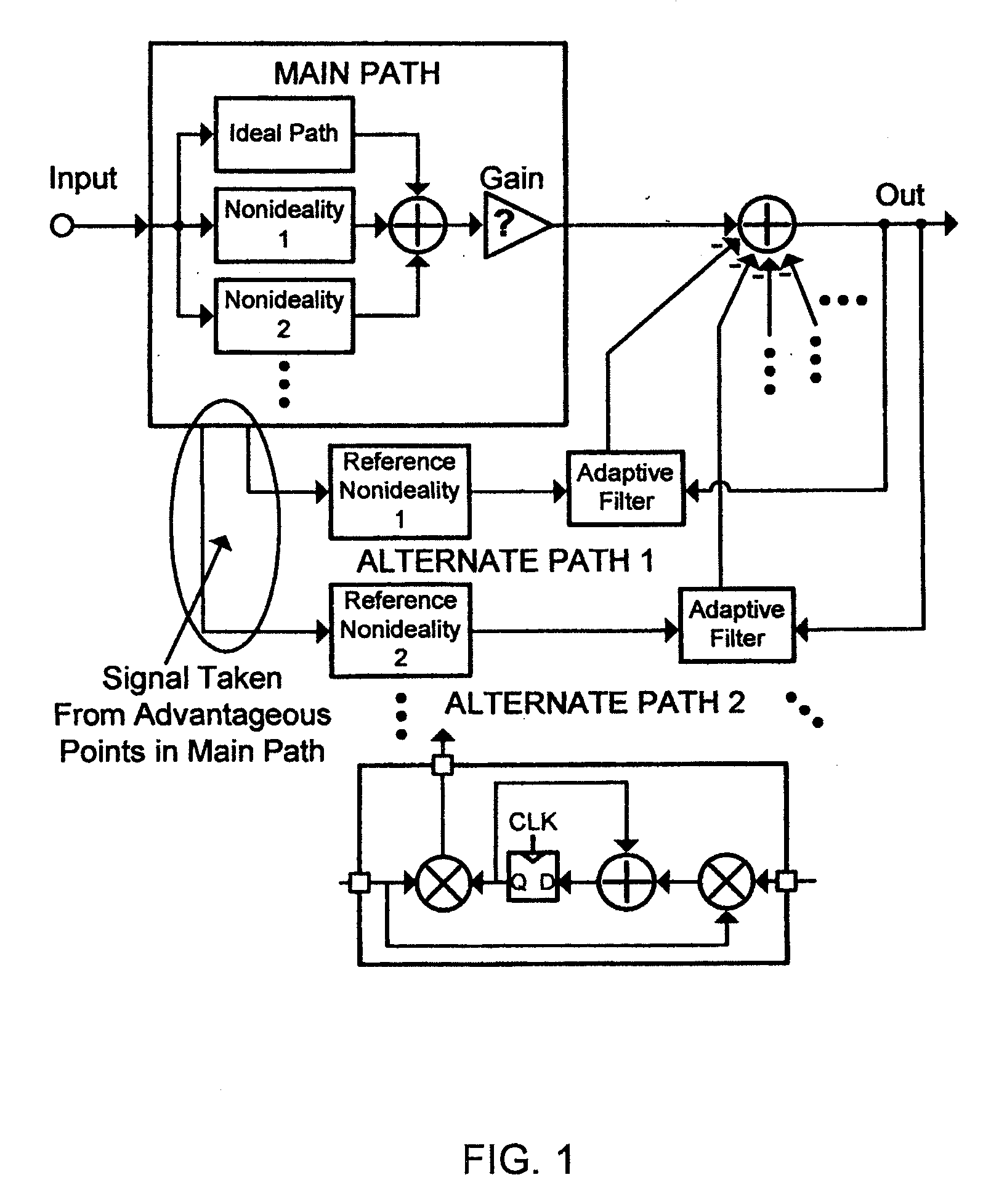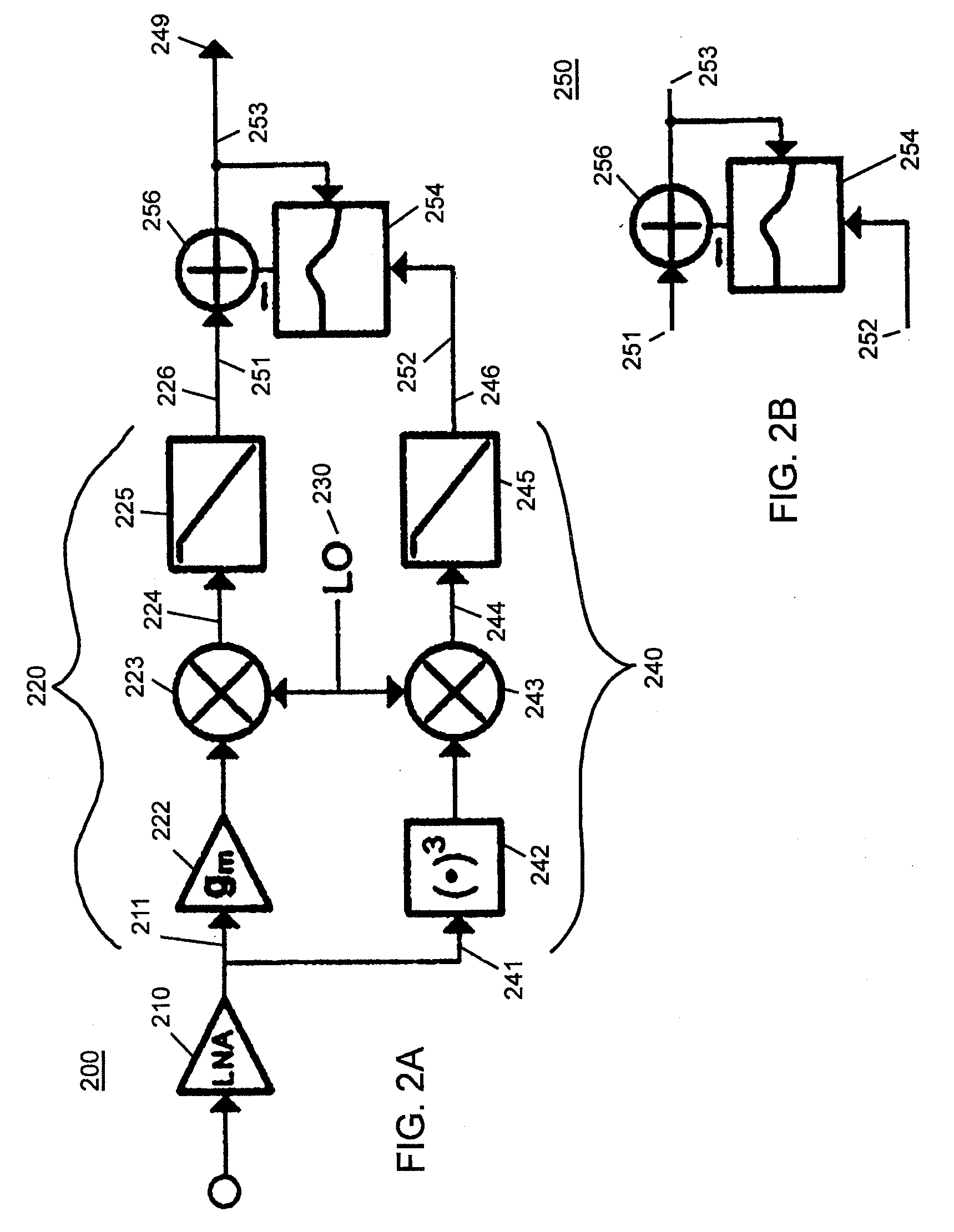Equalization of third-order intermodulation products in wideband direct conversion receiver
a technology of intermodulation products and wideband direct conversion, applied in the field of interference suppression, can solve the problems of costly off-chip components, interference generated by self-generated radio frequency (rf), and interference of desired signal intended for reception
- Summary
- Abstract
- Description
- Claims
- Application Information
AI Technical Summary
Benefits of technology
Problems solved by technology
Method used
Image
Examples
Embodiment Construction
[0096]We begin with a general introduction to receiver noise suppression, including suppression of self generated noise. An alternate path receiver solution is described that can provide equalization of third-order intermodulation products in the presence of self-generated interference. We conclude the description with exemplary prototype alternate path receiver test results.
[0097]Beginning with interference suppression, note that an error-producing signal is retained in a system at some point, while the error-generation mechanism is known, at least qualitatively. Such a scheme was described in U.S. Pat. No. 6,804,359, Signal Processor for Reducing Undesirable Signal Content, issued Oct. 12 2004 to Yu, et al. According to Yu, error producers within the RF receiver were applied to a rough model of the error generation mechanism to generate a reference signal consisting solely of the corruptive error. However, the actual model of the error is never known precisely. This information wa...
PUM
 Login to View More
Login to View More Abstract
Description
Claims
Application Information
 Login to View More
Login to View More - R&D
- Intellectual Property
- Life Sciences
- Materials
- Tech Scout
- Unparalleled Data Quality
- Higher Quality Content
- 60% Fewer Hallucinations
Browse by: Latest US Patents, China's latest patents, Technical Efficacy Thesaurus, Application Domain, Technology Topic, Popular Technical Reports.
© 2025 PatSnap. All rights reserved.Legal|Privacy policy|Modern Slavery Act Transparency Statement|Sitemap|About US| Contact US: help@patsnap.com



